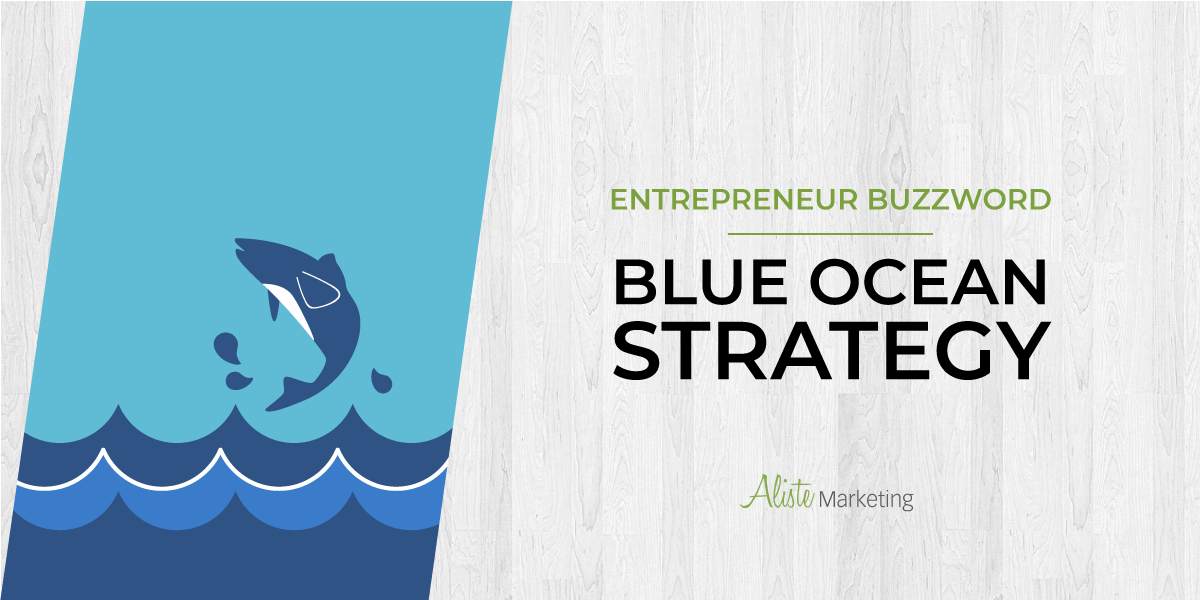As an entrepreneur, what is your biggest concern when it comes to the marketplace?
If you’ve answered, “The competition,” then you’re not alone.
The 2016 NFIB report “Small Business Problems & Priorities” ranked the top 75 problems of small businesses in the U.S. Competition from large businesses was ranked as number 31, after a range of financial, regulatory and tax-related issues.

Source: 2016 NFIB Small Business Problems & Priorities
In addition, competition from Internet businesses was ranked as number 63 and competition from imported products was ranked as number 65.
Clearly, competition is something that keeps entrepreneurs and small business owners up at night.
But what if we told you there’s a way to create your own market — one without any competition at all?
Well, the good news is that there is!
And that requires creating a blue ocean strategy.
What Is Blue Ocean Strategy?
Blue Ocean Strategy was developed by W. Chan Kim and Renée Mauborgne of the INSEAD (the European Institute of Business Administration) and first set out in their 2005 book “Blue Ocean Strategy: How to Create Uncontested Market Space and Make the Competition Irrelevant.”
Kim and Mauborgne determined that in business, there are two types of markets: red oceans and blue oceans.
The oceans symbolize the markets.
Red markets are established markets where all of the competing companies are fighting over the same business. As a result, the water turns bloody (metaphorically speaking).
Blue oceans represent new markets where, since they’re unknown, there are no players other than the companies that create them.
[clickToTweet tweet=”Blue oceans represent new markets where, since they’re unknown, there are no players other than the companies that create them.” quote=”Blue oceans represent new markets where, since they’re unknown, there are no players other than the companies that create them.”]

Demand isn’t fought over, because there’s no competition.
This frees up the companies that create them to concentrate on value-innovation in a space where there’s more than enough room for quick and profitable growth.
Examples of Successful Blue Ocean Strategies
You can create blue oceans in one of two ways:
- By creating an entirely new marketspace
- By pushing the boundaries of an existing market.
Consider the following examples:
Cirque du Soleil
In the 1980s, precisely during an era when the circus industry was in rapid decline, Canadian circus Cirque du Soleil redefined the world’s image of circuses.
Traditional circuses were struggling for several reasons, including the growing opposition to the use of animals in live entertainment, the costs associated with having star performers and the rise of many alternative, more affordable forms of entertainment.
Cirque du Soleil created an entirely new concept within the circus industry.

Source: Cirque Du Soleil
It was a circus without animals or star performers, where fantastical sets and costumes combined with theater, music and acrobatics to create a magical experience that appealed to both young and old.
In other words, Cirque made a blue ocean within a red ocean.
Amazon
Amazon is another good example of a blue ocean strategy.
Its founder, Jeff Bezos, set out to create the world’s largest online bookstore — and succeeded.
Part of the success was the convenient and well thought-out online customer experience.
But it was also the fact that as an online store, Amazon could carry a much larger inventory than regular stores because the books themselves were stored by the large network of suppliers.
Of course, today, Amazon sells practically everything, from books to garden furniture. It has even branched out into publishing, cloud hosting, grocery deliveries and more!
Airbnb
 Source: Airbnb
Source: Airbnb
Airbnb, with their online platform that allows homeowners around the world to rent out their homes to tourists and other travelers, created a great blue ocean strategy.
Now, the company is also branching out into enabling people to host experiences such as city tours and surfing lessons.
Ebay
Another example is eBay, which successfully created its own blue ocean with an online auction marketplace that’s accessible to any member of the public.
Apple
Apple has repeatedly created blue oceans, starting with the iMac and going all the way through to the iPod, iPhone and iPad — not to mention iTunes.
Developing Your Blue Ocean Strategy

As a follow-up to their 2005 book, Kim and Mauborgne published another book in 2017 titled “Blue Ocean Shift: Beyond Competing – Proven Steps to Inspire Confidence and Seize New Growth.”
This book lays out five steps for designing and implementing a blue ocean strategy:
- Determine where to start and create your team.
- Define the current state of the industry.
- Determine what hidden factors currently limit the industry in order to discover a vast pool of potential customers.
- Redefine market boundaries and create alternative opportunities.
- Select the most feasible alternative opportunity and follow through.
These steps are designed to show you where you stand in a red ocean so you and your team get aligned around the need for change and take back control. Once you take back control, you can start analyzing current pain points in the market and look for alternative ways to create value for customers.
Overall, the main takeaway is this:
Stop making competing your primary priority and start making creating your number one priority.
SEE ALSO: 3 Simple Steps for a Strategic Marketing Planning Process
Get Expert Support
If you need expert support developing your blue ocean strategy, look no further.
At Aliste Marketing, it’s our mission be more than just another vendor of marketing services.
We aim to be a strategic partner that helps drive your success not only through top of the line marketing, but also by means of business process improvement and strategic planning.

With a Lean Six Sigma certification and extensive experience, our Director of Business Development Chris Viscomi is more than happy to put his knowledge of markets and marketing to use for you. His expertise and dedication to learning your business and goals can provide you with additional insights to drive your combined creativity and ability to innovate to the next level.
Then, once you’ve developed your blue ocean strategy and are ready to take the next step in your marketing plan, let Aliste Marketing Placement Services (AMPS) provide you with the in-house marketing expertise you need to make your blue ocean strategy a true success.
Fill out our contact form or call us at 508-393-2228 for more information.




